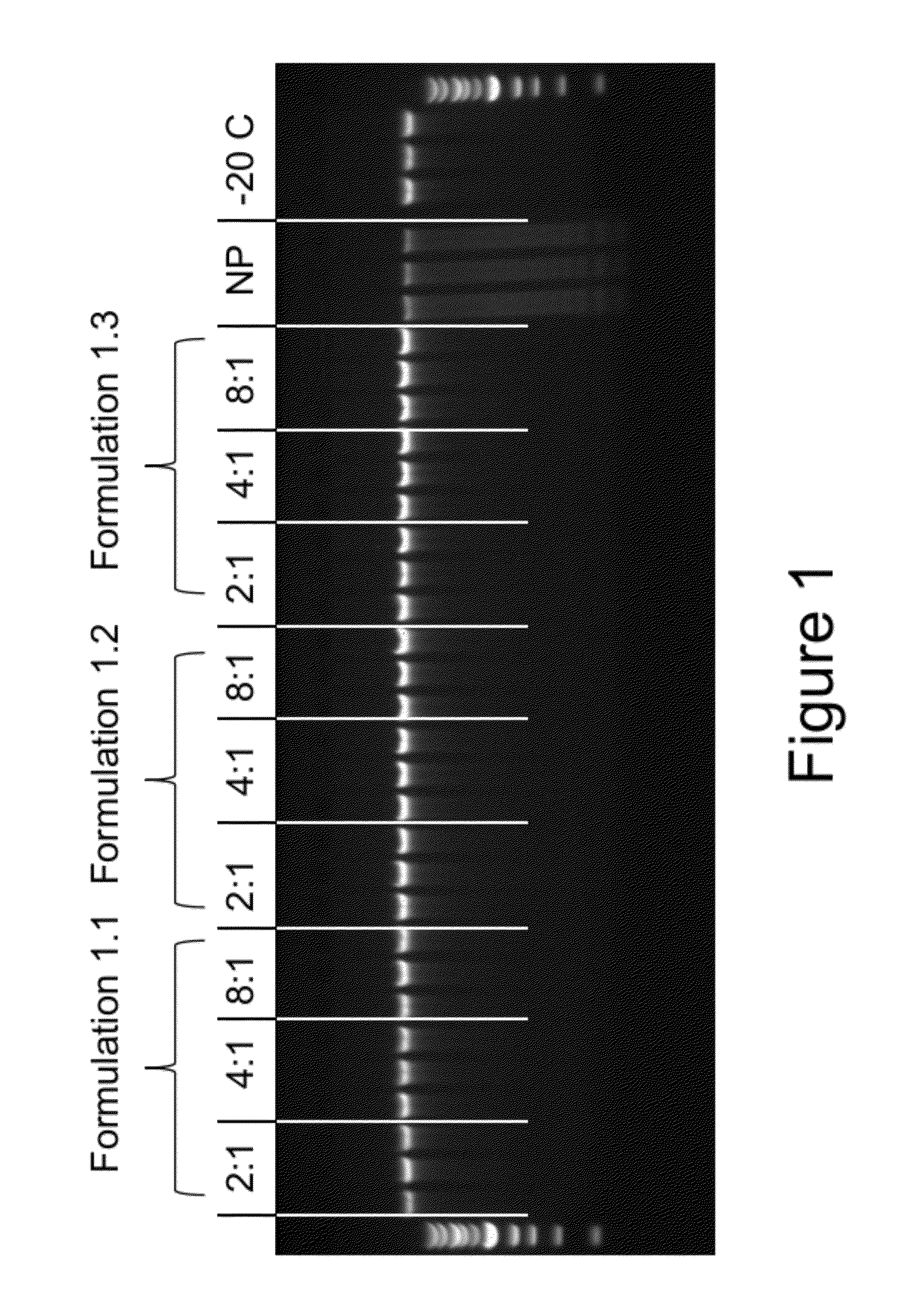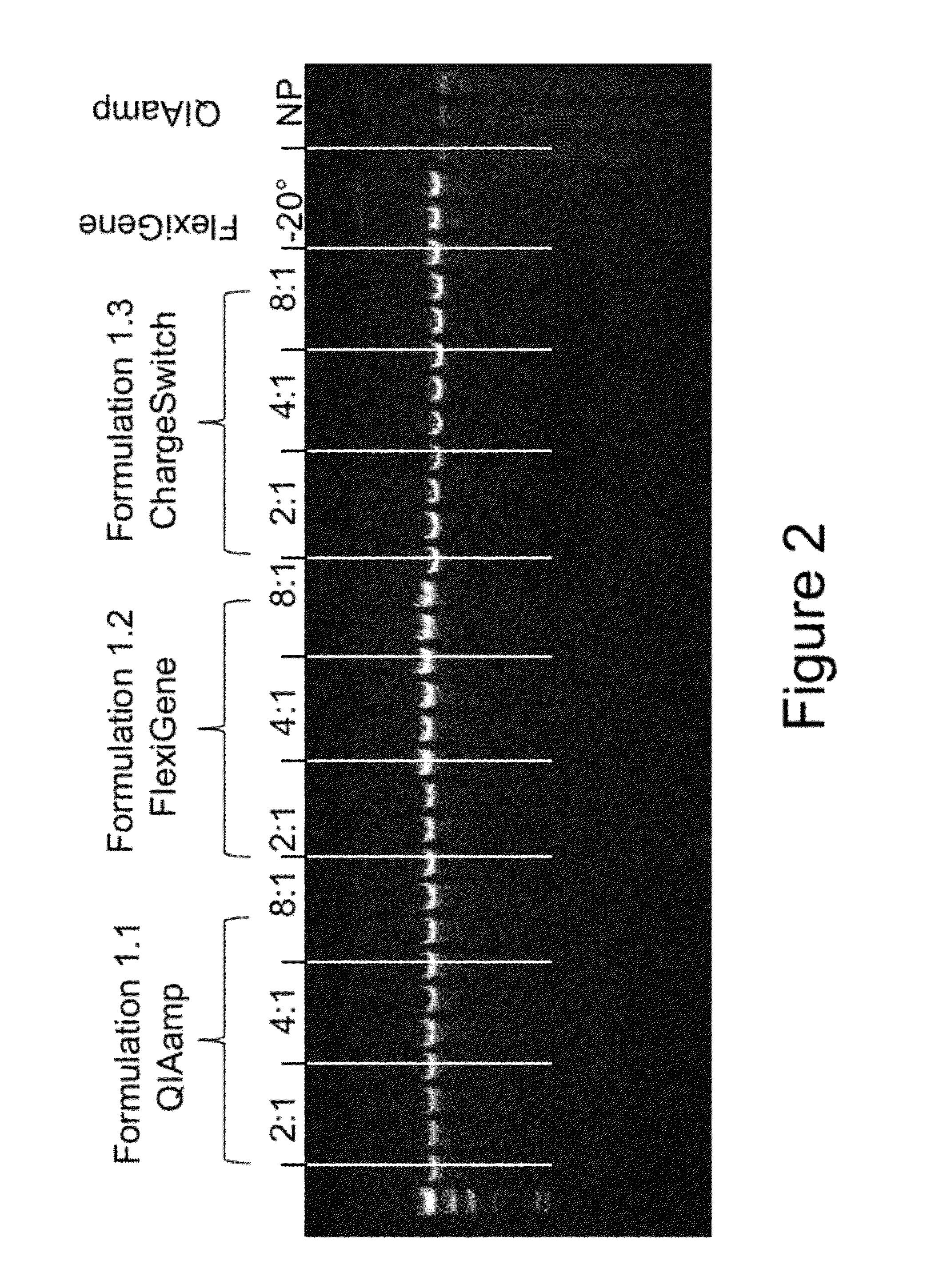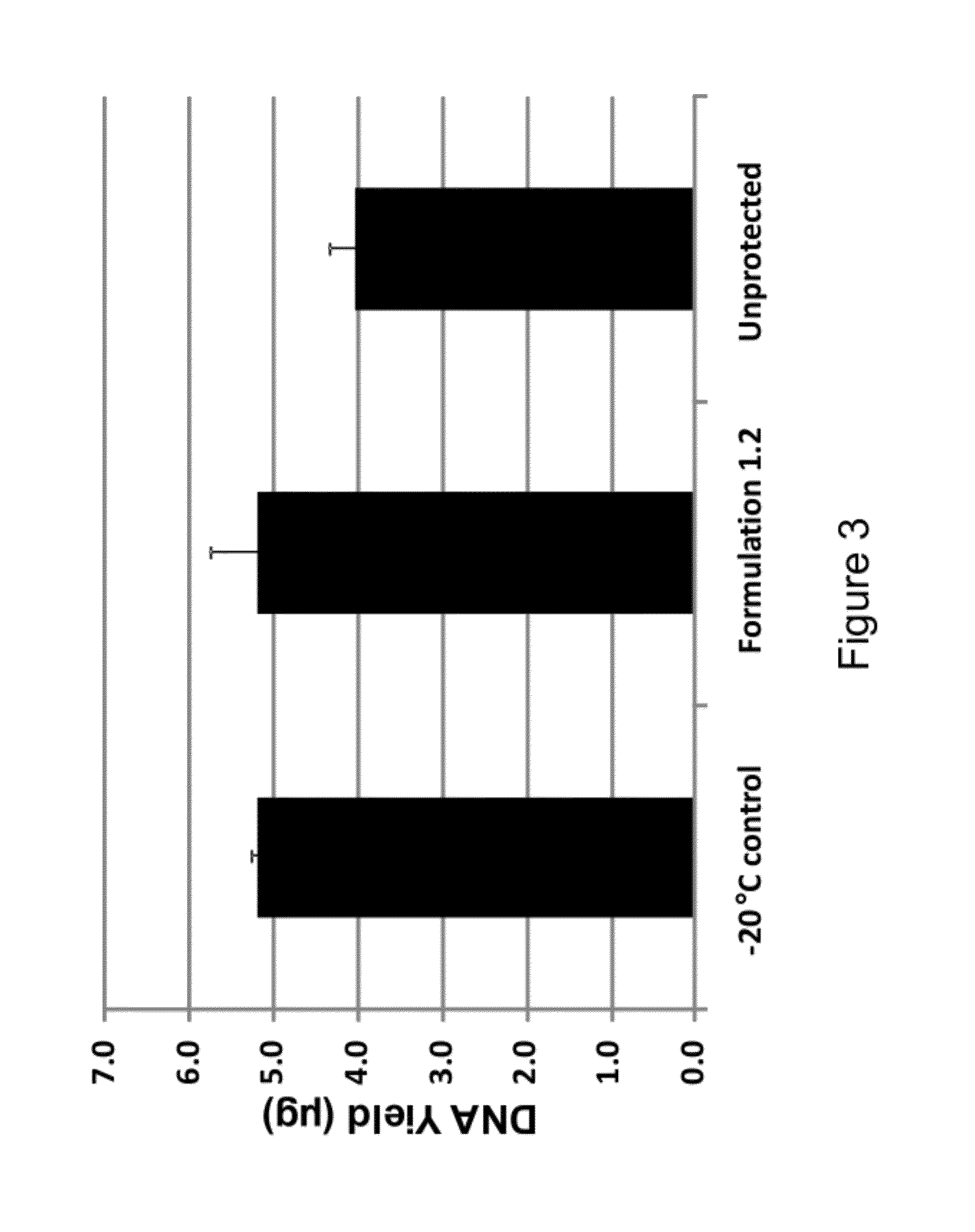Compositions for stabilizing dna, RNA and proteins in blood and other biological samples during shipping and storage at ambient temperatures
a technology of dna and rna, which is applied in the field of compositions and methods for biological sample storage, can solve the problems of inconvenient maintenance of adequate low temperature, unreliable equipment, and disadvantages of both storage systems
- Summary
- Abstract
- Description
- Claims
- Application Information
AI Technical Summary
Benefits of technology
Problems solved by technology
Method used
Image
Examples
example 1
Storage of Blood
[0140]This Example describes the preparation and characterization of a liquid-storable biological sample. In this and the following Examples, standard cell and molecular biology techniques were employed, essentially according to known methodologies (e.g., Sambrook, J., Fritsch, E. F. and Maniatis, T. (1989) Molecular Cloning: A Laboratory Manual, Cold Spring Harbor Laboratory Press, New York; Current Protocols, Nucleic Acid Chemistry, Molecular Biology, Wiley and Sons, 2003; Current Protocols, Protein Sciences, Cell Biology, Wiley and Sons, 2003). All reagents in this and the following Examples were from Sigma-Aldrich (St. Louis, Mo.) unless otherwise specified.
[0141]Fresh whole human blood was collected in K2EDTA tubes and mixed with formulations 1.1-1.3 (see Table 1) at various ratios. For the 2:1 ratio, 100 μL of blood was added to 50 μL of the respective formulations and mixed by vortexing the samples in a microfuge tube. For the 4:1 ratio, 100 μL of blood was ad...
example 2
Stabilization of DNA in Whole Blood for 62 Days at Room Temperature
[0142]Formulations #1.1-1.3 (see Table 1) were mixed with blood at different ratios were examined after being stored for 62 days at room temperature. Three different commercially available kits were used to isolate the DNA from the sample. The QiaAmp™ mini kit from Qiagen was used for extraction of the DNA from Formulation #1.1 and the non protected blood samples, while the Flexigene™ Kit also from Qiagen was used for extraction of the DNA from blood stored in Formulation #1.2 and the −20° C. stored blood samples, and a ChargeSwitch™ kit from Life Technologies was used to extract DNA from blood stored in Formulation #1.3. All samples were isolated in 100 μL of eluate. Following genomic DNA isolation of the samples 10 μL of each 100 μL eluate was applied to individual lanes of a 0.8% agarose gel containing ethidium bromide and the gel electrophoresed at 120 V for 40 minutes. The 302 nm UV illuminated gel image was cap...
example 3
DNA Recovery Following Unrefrigerated Storage of Blood
[0143]Formulations 1.1-1.3 (see Table 1) were mixed with blood at different ratios and the DNA extracted after moving the samples through a shipping simulation and then storing the samples for an additional 36 days at room temperature. The shipping simulation was conducted using the following protocol:[0144]a) Room Temp for 2 days[0145]b) 45° C. for 2 days[0146]c) Room Temp for 3 days[0147]d) −20° C. for 2 days[0148]e) Room Temp for 3 days[0149]f) 45° C. for 2 days
[0150]Following completion of the protocol the samples were held for an additional 36 days at room temperature and then extracted using three different commercially available kits to determine the quantity of DNA recovered from each of the samples. The QiaAmp™ mini kit from Qiagen was used for extraction of the DNA from Formulation #1.1 and the non protected blood samples, while the Flexigene™ Kit also from Qiagen was used for extraction of the DNA from blood stored in ...
PUM
| Property | Measurement | Unit |
|---|---|---|
| Temperature | aaaaa | aaaaa |
| Temperature | aaaaa | aaaaa |
| Fraction | aaaaa | aaaaa |
Abstract
Description
Claims
Application Information
 Login to View More
Login to View More - R&D
- Intellectual Property
- Life Sciences
- Materials
- Tech Scout
- Unparalleled Data Quality
- Higher Quality Content
- 60% Fewer Hallucinations
Browse by: Latest US Patents, China's latest patents, Technical Efficacy Thesaurus, Application Domain, Technology Topic, Popular Technical Reports.
© 2025 PatSnap. All rights reserved.Legal|Privacy policy|Modern Slavery Act Transparency Statement|Sitemap|About US| Contact US: help@patsnap.com



